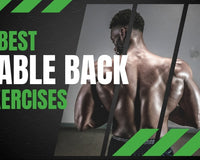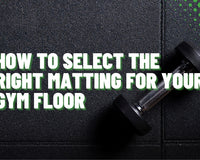There is no doubt that the rowing machine is one of the most effective cardio machines. This is because a rower engages so many muscles while being used helping to burn the maximum number of calories.
But we wanted to have a deeper look at what muscles a rowing machine works to fully understand this full-body cardiovascular exercise.
The Four Stages of Rowing
To fully understand what muscles the rowing machine works, you need to know what the four phases of rowing are.
We will quickly break down the four different stages of each rowing stroke while you row which are the catch, the drive, the finish, and recovery.
1. The Catch

First, we have the catch, which has its name because this is when the ore enters or catches the water. Here, your seat should be as far forward as it can go on the rail, with your shins and lower legs parallel to the ground.
Here, you want to keep a neutral spine by relaxing your traps and lats muscles, while also activating your triceps with your arms extended in front of you.
Hold on to the handle firmly, while also engaging your calves, hamstrings, and glutes, in preparation for the next part of the stroke, which is the drive.
In the catch, you work various muscles, including your hamstrings, glutes, calves, lats, triceps, rhomboids, and traps.
Related: 10 Best Home Rowing Machines in the UK.
2. The Drive

The second stage of the rowing stroke is known as the drive. This is when you actually take your stroke or pull backward. With your torso tilted slightly forward, use your quads and legs to push against the foot pads while keeping your hips forward and your arms extended.
At this point, you should be activating your legs, your deltoids, biceps, and lats muscles to pull the handle backward right towards you, following a straight line to your sternum. Throughout this movement, you want to keep your core engaged.
The main muscles worked during the drive stage of the rowing stroke include the deltoids, lats, biceps, traps, erector spinae, rhomboids, abdominal muscles, hamstrings, glutes, and quadriceps.
3. The Finish

We then have the third part of the rowing stroke, the finish, which is the position your body is in at the end of the stroke.
Here, aim to hinge the hips backwards, while also fully extending your legs.
At this point, you should be using your shoulders, lats, and biceps to hold the handle by your sternum. To keep you stable, you should also engage your glutes and abdominal muscles.
During the finish stage of the rowing stroke, you should be engaging your abdominal muscles, glutes and quads, your lats, shoulders, and biceps.
4. Recovery

The final stage of the rowing stroke is known as the recovery, which is where you return to your original position, and this is about maintaining eccentric control. With the use of your biceps, move your arms away from your torso while also hinging your hips forward.
Use your glutes, calves, and hamstrings to guide you back into the original position as the handle moves back over your knees and towards the retracted position.
Although this is by far the easiest part of the movement, it still activates your triceps, glutes, calves, and hamstrings.
Related: Rowing Machine Form Guide.
Main Muscles Used in Rowing

Let's take a closer look at all of the main muscles that the rowing machine activates and trains.
The Lats
One of the main muscles trained by the rowing machine are the lats, which are the muscles that run down your back, all along your spine, from the shoulders, down to the pelvis.
These are designed to pull, which is exactly what you do during rowing. Some people may refer to these as wings, as they are most visible under the arms to the rear.
The Traps
Rowing also activates the traps or trapezius muscle, which is the broad muscle at the top of your back.
This is also the main muscle worked by doing shrugs. When you row, your traps pull your shoulders backwards, therefore making it a vital muscle involved in the rowing process.
If you row a lot, you will build strong traps, which will be most visible where your shoulder blades meet the neck.
The Rear Deltoids
The deltoids are the muscles located on the top of your shoulders, and they are primarily responsible for arm rotation in an outward direction.
If we're talking about boulder shoulders, it's your deltoids that we're talking about.
Since rowing is mostly about polling, it's your rear deltoids that get activated the most.
The Biceps
Although rowing is not exactly like doing dumbbell curls, you're still pulling your arms inwards towards yourself, and to a certain degree you therefore use your biceps.
The Triceps
Just like with your biceps, although rowing is not a pushing exercise, you still use your triceps to a certain degree, especially when it comes to stabilizing the bar that you hold in your hands.It also helps to stabilize the movement as you pull backwards.
The Rhomboids
We then have your rhomboids, which are two muscles in your upper back, in between and under the shoulder blades.
Not only do they help support your shoulder blades, but they also stabilize your spine, while also helping you pull backwards.
These are actually some of the most important muscles involved in the rowing process.
The Lower Back
The rowing machine also trains your lower back, particularly the lumbar muscles.
You have to use your lower back muscles to keep your upper body straight and upright, and your lower back is also involved in pulling motions.
In fact, if you have back pain on a regular basis, the rowing machine may be a great way to strengthen those lower back muscles and reduce set back pain.
The Abdominals
An important note here is that when you are rowing, you should be engaging your core.
By engaging your core, or in other words by flexing abdominal muscles, you help create a stronger pulling motion.
While it is possible to row without flexing your abdominal muscles, it isn't recommended. Flexing your abs provides you with a much more stable midsection, which ultimately translates to more power up top.
The Quads
As far as your legs go, your quadriceps muscles are activated by rowing. This is especially the case during the first two phases of rowing, particularly when you are pulling and extending.
Here, you're not just pulling with your arms and upper body, but also pushing with your quads.
The Glutes
Although rowing generally doesn't activate your glutes quite as much as the quads, your glutes are still required to straighten your legs, so they are activated while rowing.
The Calves
As you pull with your upper body, you also push with your legs, which doesn't only activate your quads and glutes, but also your calves.
When you row, a lot of the pushing motion is going to come from the balls of your feet, as well as from your toes, which causes you to flex your calves.
Muscles Activated When Rowing – Final Thoughts

As you can see, rowing is a fantastic exercise that trains virtually every muscle in your whole body. Not only is it great for strength conditioning, but it's also a very intense cardiovascular exercise.





